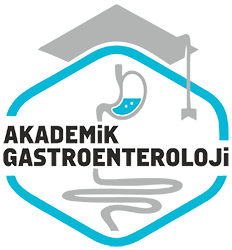Aralik 2007
Genotip 1b ile infekte kronik hepatit C?li hastalarda tedaviye uyum, sik hasta takibi ve ilaç yan etkileriyle mücadelenin kalıcı viral yanit üzerine olan etkisinin değerlendirilmesi
Evaluating the effect of compliance, frequent follow-up and struggle with drug side-effects on sustained viral response in chronic hepatitis C patients infected with genotype 1b
- Ana Sayfa
- Sayılar
- Aralik 2007
- Genotip 1b ile infekte kronik hepatit C?li hastalarda tedaviye uyum, sik hasta takibi ve ilaç yan etkileriyle mücadelenin kalıcı viral yanit üzerine...
Özet
Giriş ve Amaç: Genotip 1b ile infekte kronik hepatit C?li hastalar, tedaviye yaniti en düşük olan hasta grubunu olustururlar. Ülkemizde de En sık genotip 1b ile infeksiyon görülmektedir. yapılan çalışmalarda genotip 1b ile infekte kronik hepatit C?li Hastaların tedavisi sonrasi kalici viral yanit orani %45-55 arasında degismektedir. Çalışmamızin amacı, genotip 1b ile infekte kronik hepatit C Hastalarında tedaviye uyum, sik hasta takibi ve ilaç yan etkileriyle mücadelenin kalici viral yanit üzerine olan etkisini değerlendirmektir. Gereç ve Yöntem: çalışmaya yaş ortalaması 48,48 ± 10,54 olan, 17?si kadın 4?ü erkek toplam 21 genotip 1b ile infekte kronik hepatit C hastası alinmıştır. Hastalara 48 haftalik peginterferon alfa-2a ve ribavirin tedavisi uygulanmıştır. Ilaçlara bagli yan etki gelişen hastalar, siki takibe alinarak mümkün olduğunca ilaç dozu azaltilmamaya çalisilmıştır. Doz azaltimi gerekse bile bu mümkün olduğunca minimum düzeyde yapilarak her firsatta tekrar eski doza yükseltilmeye çalisilmıştır. Bulgular: çalışma grubumuzda; erken virolojik yanit %95,2, tedavi sonu yanit %85,7, kalici viral yanit %80,9 olarak saptanmıştır. Sonuç; kronik hepatit C?de tedaviye yaniti en düşük olan genotip 1b ile infekte hastalarda tedaviye uyum, sik hasta takibi ve ilaç yan etkileriyle mücadelenin tedaviye yaniti artiracagini düsünmekteyiz.
Abstract
Background and Aim: Chronic hepatitis C patients who infected with genotype 1b consist the patient group which has the lowest response to therapy. Infection with genotype 1b is the most prevalent in our country. In several studies, the post-therapeutic sustained viral response rate of the chronic hepatitis C patients, infected with genotype 1b, is 45-55 %. Our study was done to evaluate the effect of compliance, frequent follow-up, struggle with drug side effects to sustained viral response in chronic hepatitis C infected with genotype1b. 21 chronic hepatitis C patients (17 female, 4 male) infected with genotype 1b were taken in this study. Material and Method: Peginterferon alpha-2a and ribavirin combination therapy was given to all patients for 48 weeks. Patients who experienced drug side effect were taken in close follow-up avoiding dose reductions as much as possible. When necessary, dose reductions were done as in minimal levels, then doses were increased to normal levels as soon as possible. Results: In our study group, early virological response was 95,2%, end of treatment response was 85,7% and sustained viral response was 80,9%. Conclusion: According to our results, we think that compliance, frequeny follow-up and struggle with drug side-effects will improve the therapy response in patient infected with genotype 1b which has the lowest response in chronic hepatitis C.



